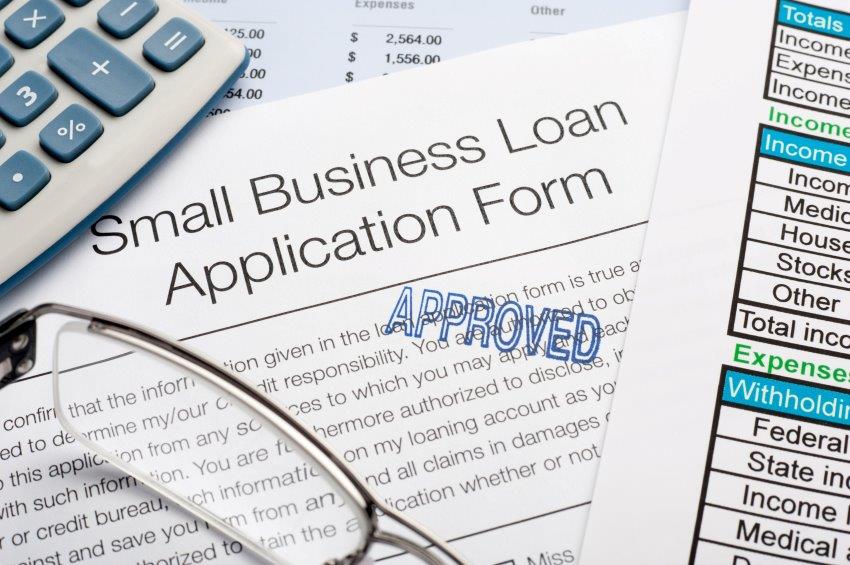7 Key Tips for Getting Your Small Business Loan Approved
For many entrepreneurs, a small business loan is a critical tool for launching an idea, expanding operations, or navigating unexpected challenges. However, the process of securing one can feel like trying to solve a complex puzzle. Lenders are inherently risk-averse, and they’re looking for clear evidence that your business is a sound investment and that you are a reliable borrower. The good news is, getting your business loan approved is often less about luck and more about thorough preparation. By following these key tips, you can significantly increase your chances of success and secure the financing you need.

The Foundation: Preparing Your Financial House
Before you even fill out an application, you need to lay the groundwork. Lenders want to see a clear, stable financial picture.
1. Know Your Credit Score (Personal & Business)
Your credit score is the single most important factor for many lenders. It’s a snapshot of your financial responsibility, and a good score signals to lenders that you have a history of paying your debts on time. Most lenders will look at your personal credit score (like your FICO score) as well as your business’s credit history.
- Personal Credit Score: Aim for a score of 700 or higher. A score below this may not disqualify you, but it will make it harder to get a loan with favorable terms. Check your personal credit report for free with services like Credit Karma or AnnualCreditReport.com and correct any errors before applying.
- Business Credit Score: If your business has been operational for a while, it likely has a separate business credit history. Make sure your business payments to vendors and suppliers are on time to build a strong profile.
2. Develop a Solid Business Plan
A business plan is your roadmap. It’s the document that proves to a lender that you have a clear vision and a viable strategy for success. It shows them how you’ll use the loan money to generate a return and, most importantly, repay the debt. A comprehensive business plan should include:
- An executive summary that outlines your business and your mission.
- A market analysis showing your target audience and competitive landscape.
- Detailed financial projections for the next 3-5 years.
- A clear explanation of how the loan will be used.
Demonstrating Financial Health
Lenders want to see more than just a good idea; they want to see a profitable operation with reliable cash flow.
3. Organize Your Financial Documents
Being organized shows professionalism and a strong grasp of your business’s finances. Have all your key documents ready before you apply. This includes, but is not limited to:
- Business and personal tax returns from the last 2-3 years.
- Bank statements for the last 6-12 months.
- A current balance sheet and profit and loss statement.
- A list of your business debts and assets.
Having these documents neatly prepared saves time and shows the lender you are a serious and capable borrower.
4. Show a Healthy Cash Flow
While profitability is important, cash flow is often a more critical factor for lenders. A business can be profitable on paper but still not have enough cash on hand to cover daily expenses. Lenders need to be confident that you can make your monthly loan payments, even during slow periods. Review your cash flow statements to ensure they show a consistent ability to meet your obligations. If your cash flow is currently weak, you may want to wait until it stabilizes before applying.
Strengthening Your Application
Once you have your core financial documents in order, you can take a few extra steps to make your application stand out.
5. Be Specific About Your Loan Purpose
Lenders are more likely to approve a loan for a clear, well-defined purpose. They want to know exactly what the money is for. Is it for buying a new piece of equipment, expanding to a second location, or hiring new employees? A specific purpose makes the loan less risky because it shows you’ve carefully planned your investment. Vague requests like “to grow the business” will likely be met with skepticism.
6. Be Ready to Offer Collateral
Collateral is an asset—such as real estate, equipment, or inventory—that you offer as security for the loan. In the event you default on your loan, the lender can seize the collateral to recover their losses. Offering collateral significantly reduces the lender’s risk and can help you secure a larger loan amount or a lower interest rate. If you don’t have business assets to use as collateral, some lenders may accept personal assets.
The Final Step: Finding the Right Lender
Not all lenders are the same. The type of lender you choose can have a huge impact on your application’s success and the loan terms you receive.
7. Choose the Right Lender
- Traditional Banks: These lenders often have the lowest interest rates but the strictest requirements. They are best for established businesses with strong financials and a long history.
- Credit Unions: As not-for-profit institutions, credit unions may offer lower rates and more flexible terms than banks. They often prioritize relationships and may be more willing to work with small, local businesses.
- Online Lenders: These lenders have a fast application process and less stringent requirements, making them ideal for businesses that need money quickly. However, they often come with higher interest rates.
By researching and comparing your options, you can find a lender that aligns with your business’s specific needs and financial profile.
Conclusion
Getting a small business loan is a major milestone, and the preparation you put in is a reflection of your commitment to your business’s success. By knowing your credit scores, having a strong business plan, and organizing your finances, you are not just fulfilling a checklist for a lender—you’re building a stronger, more resilient business. With these tips, you can approach the loan process with confidence, proving that your venture is a worthwhile investment.







